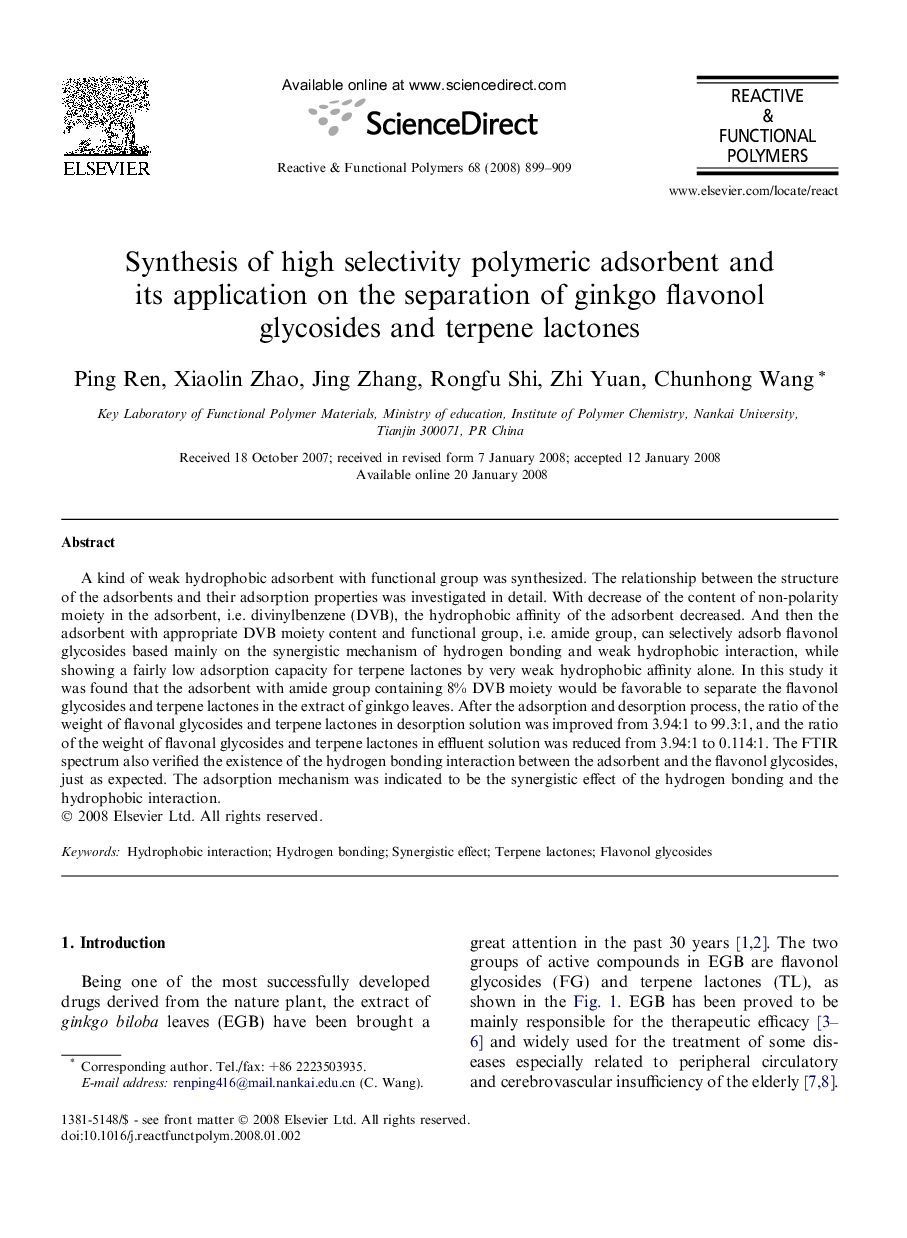| Article ID | Journal | Published Year | Pages | File Type |
|---|---|---|---|---|
| 5210944 | Reactive and Functional Polymers | 2008 | 11 Pages |
Abstract
A kind of weak hydrophobic adsorbent with functional group was synthesized. The relationship between the structure of the adsorbents and their adsorption properties was investigated in detail. With decrease of the content of non-polarity moiety in the adsorbent, i.e. divinylbenzene (DVB), the hydrophobic affinity of the adsorbent decreased. And then the adsorbent with appropriate DVB moiety content and functional group, i.e. amide group, can selectively adsorb flavonol glycosides based mainly on the synergistic mechanism of hydrogen bonding and weak hydrophobic interaction, while showing a fairly low adsorption capacity for terpene lactones by very weak hydrophobic affinity alone. In this study it was found that the adsorbent with amide group containing 8% DVB moiety would be favorable to separate the flavonol glycosides and terpene lactones in the extract of ginkgo leaves. After the adsorption and desorption process, the ratio of the weight of flavonal glycosides and terpene lactones in desorption solution was improved from 3.94:1 to 99.3:1, and the ratio of the weight of flavonal glycosides and terpene lactones in effluent solution was reduced from 3.94:1 to 0.114:1. The FTIR spectrum also verified the existence of the hydrogen bonding interaction between the adsorbent and the flavonol glycosides, just as expected. The adsorption mechanism was indicated to be the synergistic effect of the hydrogen bonding and the hydrophobic interaction.
Keywords
Related Topics
Physical Sciences and Engineering
Chemistry
Organic Chemistry
Authors
Ping Ren, Xiaolin Zhao, Jing Zhang, Rongfu Shi, Zhi Yuan, Chunhong Wang,
